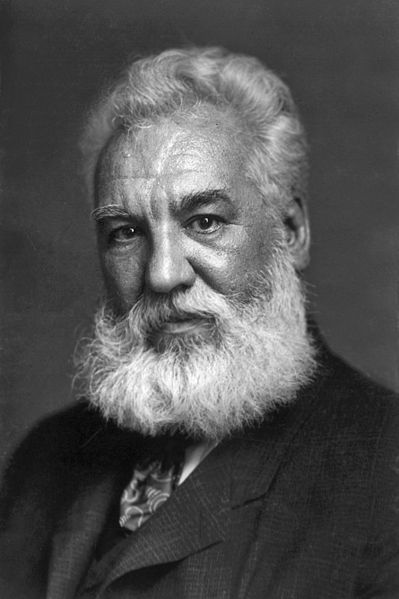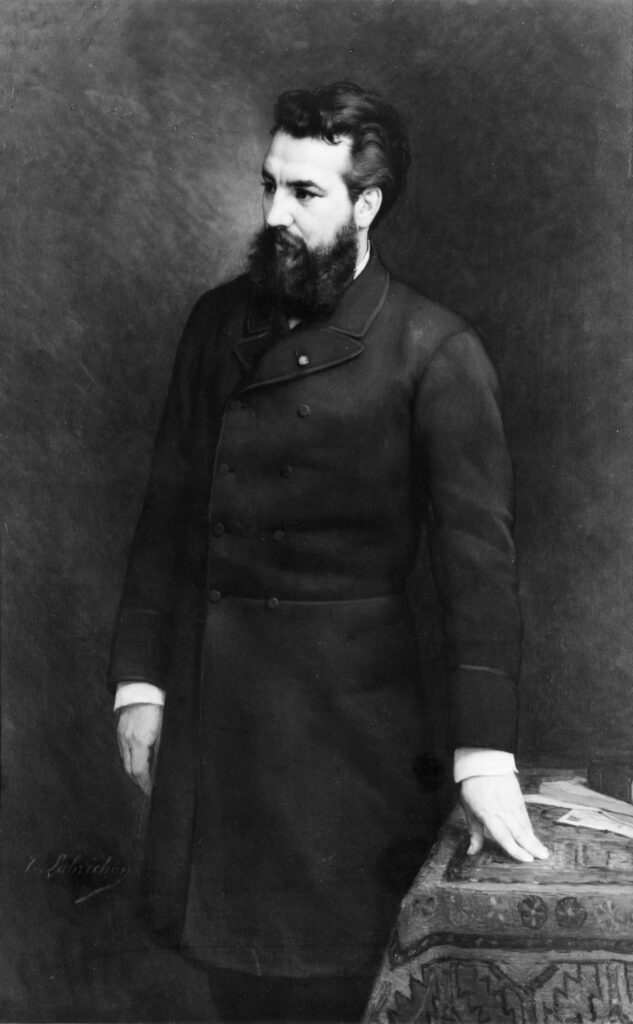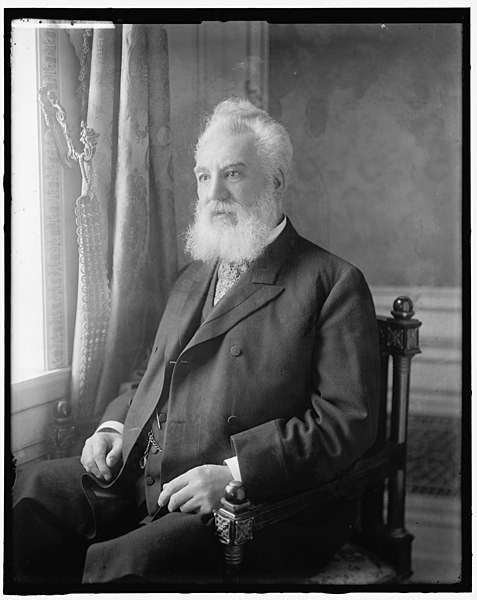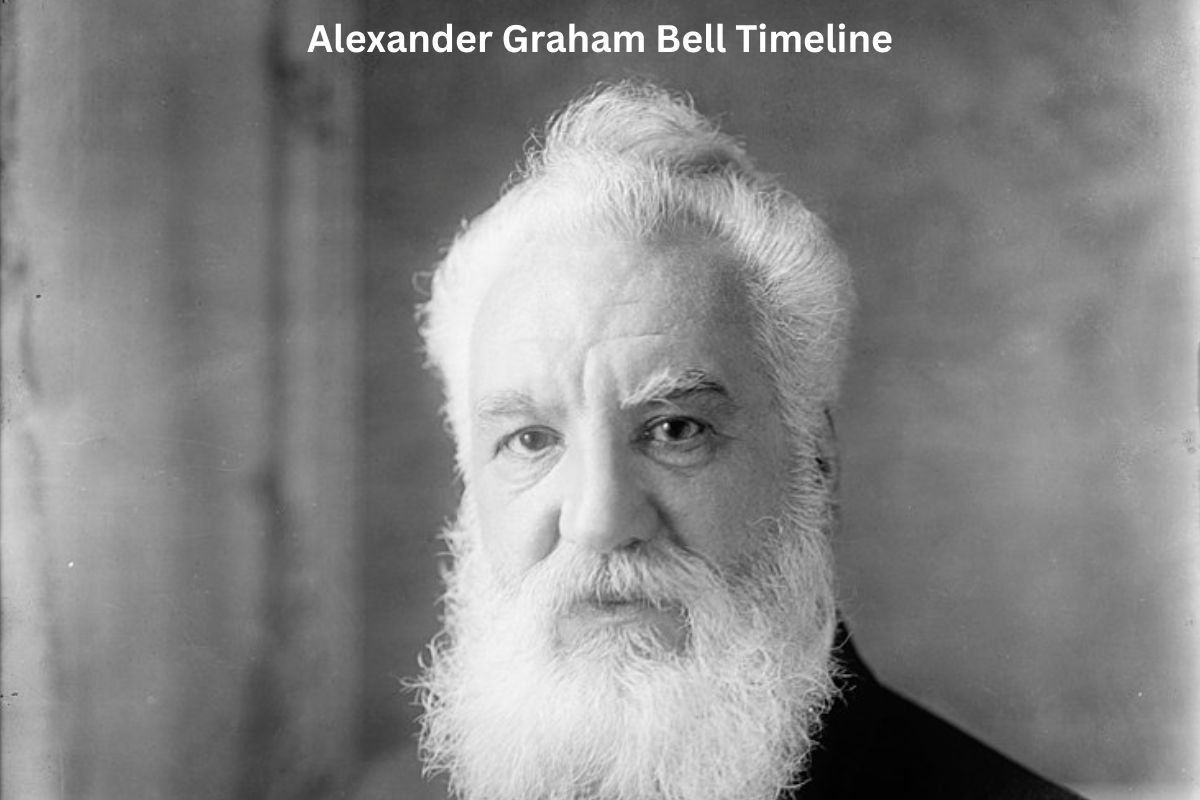Alexander Graham Bell, born in 1847 and passing away in 1922, was a highly influential Scottish-born inventor. He is best known for inventing the telephone, a groundbreaking invention that revolutionized worldwide communication.
Beyond the telephone, Bell made substantial contributions to various fields, including aviation, audiology, and education for the deaf.
His work not only reshaped how people connect but also left an indelible mark on science and technology, earning him a place of enduring significance in history.
| Year | Event |
|---|---|
| 1847 | Alexander Graham Bell is born in Edinburgh, Scotland. |
| 1865 | Bell begins his studies at the University of Edinburgh, where he is influenced by his father and grandfather, both of whom were associated with elocution and speech therapy. |
| 1870 | Bell immigrates to Canada with his family and continues his work on speech and sound. |
| 1871 | Bell starts working as a teacher for the deaf at the Boston School for Deaf Mutes. |
| 1874 | Bell opens his own private practice in Boston to teach the deaf and continues his experiments with sound and speech. |
| 1876 | On March 10, Bell receives a patent for the invention of the telephone, which he demonstrated for the first time by saying the famous words to his assistant, Thomas Watson, “Mr. Watson, come here, I want to see you.” |
| 1877 | Bell founds the Bell Telephone Company (later known as AT&T) to commercialize the telephone. He also develops the harmonic telegraph, an early version of the metal detector. |
| 1880 | Bell receives a patent for the photophone, a device that transmits sound on a beam of light, and conducts successful experiments with it. |
| 1881 | Bell becomes a naturalized American citizen. |
| 1882 | Bell becomes a professor of vocal physiology and elocution at Boston University. |
| 1888 | Bell is one of the founding members of the National Geographic Society. |
| 1907 | Alexander Graham Bell receives the Franklin Institute’s Elliott Cresson Medal for his contributions to aviation. |
| 1915 | Bell invents a device called the “audiometer” to detect hearing problems. |
| 1917 | Alexander Graham Bell and his associates found the Aerial Experiment Association, which works on early aviation experiments. |
| 1920 | Bell and his collaborators, known as the “Silver Dart Team,” conduct the first controlled powered flight in Canada in a Silver Dart airplane. |
| 1922 | On August 2, Alexander Graham Bell passes away in Baddeck, Nova Scotia, Canada. |
| 1936 | The Bell Telephone Memorial, a museum dedicated to Bell’s life and inventions, is opened in Baddeck, Nova Scotia. |
Timeline of Alexander Graham Bell
1847: Alexander Graham Bell is born in Edinburgh, Scotland
Alexander Graham Bell was born on March 3, 1847, in Edinburgh, Scotland. He was the second of three sons born to Alexander Melville Bell and Eliza Grace Symonds Bell.
Also Read: Alexander Graham Bell Accomplishments
His family was steeped in the study of elocution, speech, and communication, which would later influence his work on the telephone.

1865: Bell begins his studies at the University of Edinburgh, where he is influenced by his father and grandfather, both of whom were associated with elocution and speech therapy
At the age of 18, in 1865, Alexander Graham Bell enrolled at the University of Edinburgh. His grandfather, Alexander Bell, and his father, Alexander Melville Bell, were both known for their work in elocution and speech therapy.
This familial background in communication and speech likely played a significant role in shaping Bell’s interests and future work. He studied a wide range of subjects, including anatomy and physiology, which would become important in his later inventions and innovations related to speech and sound.
1870: Bell immigrates to Canada with his family and continues his work on speech and sound
In 1870, Alexander Graham Bell and his family moved to Canada. This move was influenced by both personal and professional reasons.
Bell’s mother and wife were both in poor health, and the climate of Canada was believed to be more suitable for their well-being. Additionally, Bell’s father had secured a teaching position in Canada.
Also Read: Alexander Graham Bell Facts
After settling in Canada, Bell continued his work on speech and communication, working with the deaf and developing his ideas for transmitting sound, which would eventually lead to his invention of the telephone.
1871: Bell starts working as a teacher for the deaf at the Boston School for Deaf Mutes
In 1871, Alexander Graham Bell began working as a teacher at the Boston School for Deaf Mutes, which is now known as the Horace Mann School for the Deaf.
This position marked a crucial turning point in his career. Bell’s mother and wife were both deaf, which had a significant impact on his life and work.
His experiences teaching deaf students led him to develop a deep understanding of speech and communication challenges faced by the deaf, and this motivated him to find ways to improve and enhance communication for the deaf and hard of hearing.

1874: Bell opens his own private practice in Boston to teach the deaf and continues his experiments with sound and speech
In 1874, Alexander Graham Bell opened his own private practice in Boston, where he continued to work with deaf individuals and develop techniques to improve their speech and communication skills.
His work at the school and in his private practice laid the groundwork for his groundbreaking experiments in sound transmission.
Bell was particularly interested in the idea of transmitting speech over long distances, and he began conducting experiments with various sound transmission devices.
1876: On March 10, Bell receives a patent for the invention of the telephone
March 10, 1876, is a historic date in the history of communication technology. On this day, Alexander Graham Bell received the patent for his most famous invention, the telephone. The patent described an “apparatus for transmitting vocal or other sounds telegraphically.”
Shortly after receiving the patent, Bell famously conducted the first successful telephone call to his assistant, Thomas Watson, who was in another room.
Bell spoke the words, “Mr. Watson, come here, I want to see you,” and those words marked the birth of the telephone as a revolutionary communication device.
1877: Bell founds the Bell Telephone Company (later known as AT&T) to commercialize the telephone. He also develops the harmonic telegraph, an early version of the metal detector
In 1877, Alexander Graham Bell founded the Bell Telephone Company, which would later become the American Telephone and Telegraph Company (AT&T).
This company was established to commercialize the telephone and provide telephone services to the public. Bell’s invention quickly gained popularity, and he and his associates worked tirelessly to expand the telephone network and improve its technology.
During this period, Bell also worked on other inventions, including the harmonic telegraph, which was an early version of the metal detector. This device had applications in locating metallic objects, and it was used to attempt to locate the bullet lodged in President James A. Garfield’s body after he was shot in 1881.

1880: Bell receives a patent for the photophone, a device that transmits sound on a beam of light, and conducts successful experiments with it
In 1880, Alexander Graham Bell received a patent for the photophone, another groundbreaking invention. The photophone allowed for the transmission of sound on a beam of light.
Bell’s photophone used variations in light intensity to carry sound, and it was a precursor to modern optical communication technologies.
Although the photophone did not achieve widespread commercial success, it demonstrated Bell’s innovative thinking in the field of telecommunications.
1881: Bell becomes a naturalized American citizen
In 1881, Alexander Graham Bell became a naturalized citizen of the United States. Despite being born in Scotland, he spent much of his life and conducted his most significant work in the United States.
His contributions to science, communication, and technology were widely recognized, and he remained a prominent figure in American history.
1882: Bell becomes a professor of vocal physiology and elocution at Boston University
In 1882, Alexander Graham Bell was appointed as a professor of vocal physiology and elocution at Boston University. This position allowed him to continue his work in speech therapy and communication while also teaching and mentoring students.
Bell’s expertise in speech and communication made him a respected educator, and he continued to explore new ideas and inventions during his tenure at the university.
1888: Bell is one of the founding members of the National Geographic Society
In 1888, Alexander Graham Bell played a significant role in the founding of the National Geographic Society. The society was established to promote and support the study and exploration of geography, science, and culture around the world.
Bell served as its president from 1896 to 1904 and played a key role in shaping the early direction and goals of the organization.
1907: Alexander Graham Bell receives the Franklin Institute’s Elliott Cresson Medal for his contributions to aviation
In 1907, Bell was awarded the Elliott Cresson Medal by the Franklin Institute. This prestigious award recognized his contributions to the field of aviation.
Bell had a keen interest in flight and, along with a group of collaborators known as the Aerial Experiment Association, conducted experiments and made significant advancements in aviation technology during this period.
1915: Bell invents a device called the “audiometer” to detect hearing problems
In 1915, Alexander Graham Bell invented the audiometer, a device used to measure a person’s hearing ability and diagnose hearing problems. This invention was a significant contribution to the field of audiology and helped in the assessment and treatment of hearing impairments.
1917: Alexander Graham Bell and his associates found the Aerial Experiment Association, which works on early aviation experiments
In 1917, Alexander Graham Bell, along with notable aviation pioneers like Glenn Curtiss and John McCurdy, formed the Aerial Experiment Association (AEA). This association was dedicated to advancing aviation technology and conducting experiments to achieve controlled flight.
Bell’s involvement in the AEA led to the development of several innovative aircraft, including the Silver Dart, which became the first powered, heavier-than-air machine to fly in Canada.
1920: Bell and his collaborators, known as the “Silver Dart Team,” conduct the first controlled powered flight in Canada in a Silver Dart airplane
In 1920, the Silver Dart Team, led by Alexander Graham Bell, successfully conducted the first controlled powered flight in Canada using the Silver Dart airplane. This achievement marked an important milestone in Canadian aviation history and demonstrated Bell’s continued dedication to advancing aviation technology.
1922: On August 2, Alexander Graham Bell passes away in Baddeck, Nova Scotia, Canada
On August 2, 1922, Alexander Graham Bell passed away in Baddeck, Nova Scotia, Canada, at the age of 75. His death marked the end of an era and the loss of one of the most influential inventors and scientists in history.
Bell’s work had transformed communication, aviation, audiology, and other fields, leaving a lasting legacy that continues to impact the world to this day.
1936: The Bell Telephone Memorial, a museum dedicated to Bell’s life and inventions, is opened in Baddeck, Nova Scotia
In 1936, the Bell Telephone Memorial museum was opened in Baddeck, Nova Scotia, as a tribute to Alexander Graham Bell’s life and numerous inventions.
This museum showcases artifacts, documents, and exhibits related to Bell’s work, including his work on the telephone, aviation, and audiology. It serves as a significant historical and educational site, allowing visitors to learn about Bell’s remarkable contributions to science and technology.
